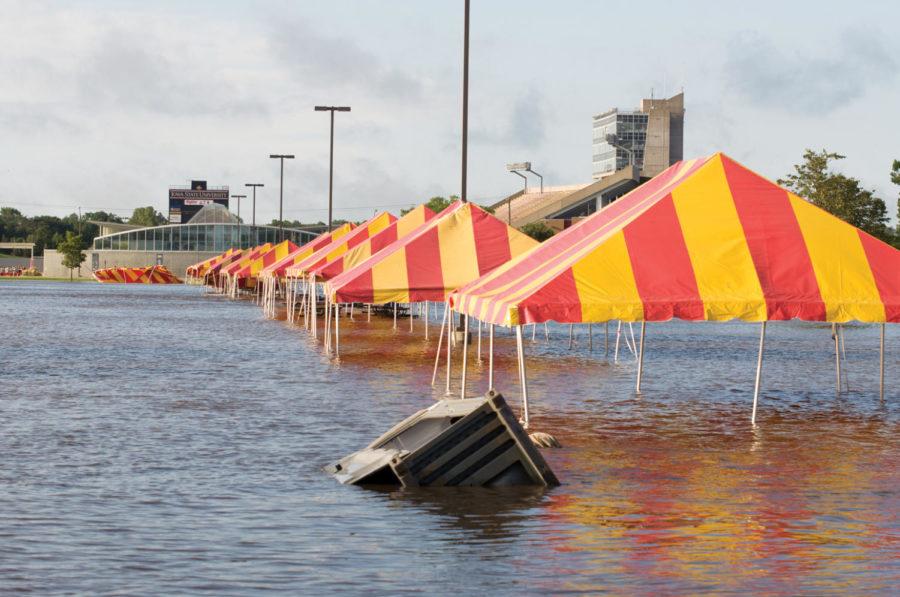Former Iowa Congressman says Ames would not have flooded if reservoir had been built
Photo: Logan Gaedke/Iowa State Daily
Stadium parking lots flooded with water on Aug. 10.
October 18, 2010
It’s time for action: Either build the reservoir or take down the sign. That’s what the Des Moines Register said in an August 1986 editorial, “Overlooked for 18 years.”
The editorial said the sign, north of Ames on Interstate 35, which said “Scenic Overlook,” was “one of the most enduring Iowa jokes.”
The sign was put up in anticipation of a reservoir, left on the drawing board of the Army Corps of Engineers for decades. It was a part of a plan former U.S. Rep. Neal Smith pushed beginning in the 1960s and kept fighting for until he left Congress in 1994.
“It was just something that needed to be done for Ames,” Smith said. “For Ames and for Duff Avenue, and the business area needed that protection, and the university needed that protection … I knew they needed it or they would get in trouble sometime, which they did.”
By 1986, just prior to that editorial, the plan was to create a 3,620-acre flood stage reservoir on the Skunk River north of Ames, lower from the maximum 5,000-acre original plan.
“You wouldn’t have had this flood damage to Hilton Coliseum or in the area down there along Squaw Creek if that dam had been in place,” Smith said.
In summer 1986 the plan failed, though, facing opposition at that time by weary state and local governments unwilling to sponsor the project, and residents in Story City who feared the reservoir could potentially flood their city park and golf course.
Whenever there was a flood in Squaw Creek, they would close the dam so the flood water would go into the Skunk River.
When I-35 was put it, it was built around the area where the reservoir would have gone in.
Smith, Iowa’s longest-serving Congressman, said he had the money appropriated and ready to go in 1971 — $7 million from the federal government — when redistricting took Story County out of his Congressional district. But, at that time, Gov. Robert Ray — a Republican — and Iowa State University opposed the plan.
While Ames was out of Smith’s district, there was another chance to fund the construction of a 5 million gallon reservoir in 1977 through the U.S. Community Drought Relief Act as a way to control water supply during droughts, but it never took off.
Once he got Ames back in his district a decade later, Smith began to push for the reservoir again.
“Ames is going to reach a time when no construction projects are permitted,” he said in an article in the Ames Tribune on March 1, 1984.
Opposition never went away; farmers would not sell their land and businesses protested, even closing their doors for a day to show their disapproval in December 1984.
A 1983 report by then-Ames Water Director Harris Seidel noted the proposal of a reservoir in the same area has been discussed as far back as the 1930s.
Smith left Washington, D.C. as a result of the Republican wave of 1994, but he still supports building the lake that never happened.
Smith believes if a new cost-benefit ratio analysis would be done today, because of all of the new businesses along Duff Avenue and growth of Iowa State’s campus, the result would be favorable for the dam. However, he admits this is a “pure guess.”







